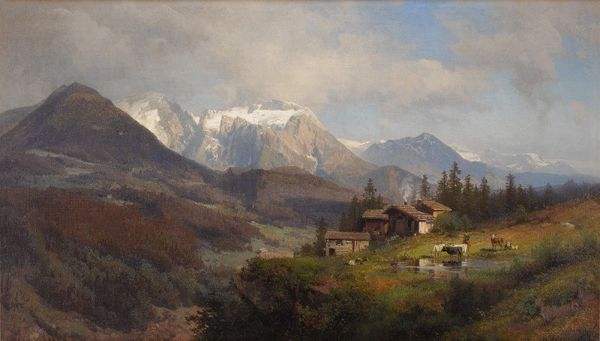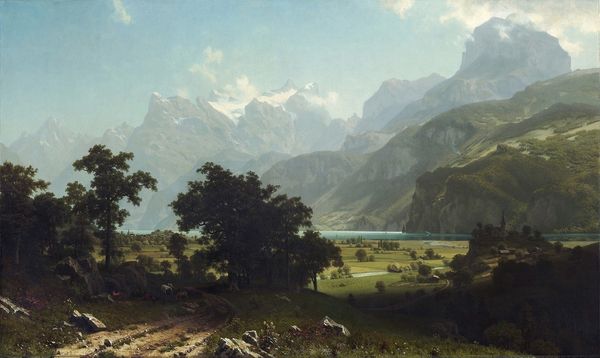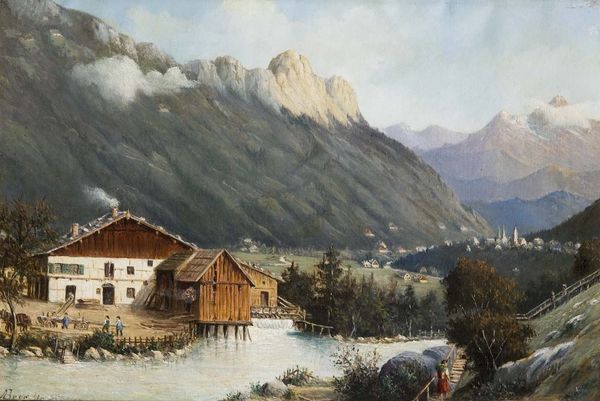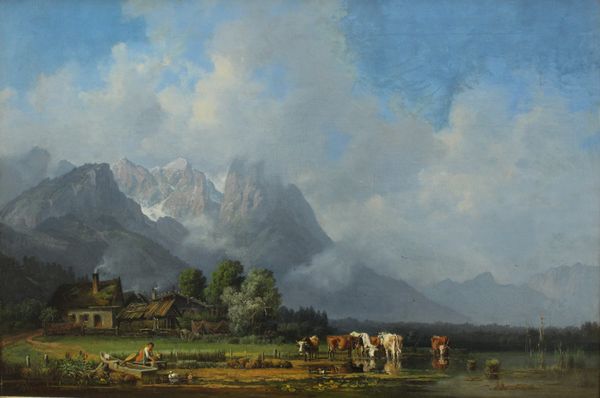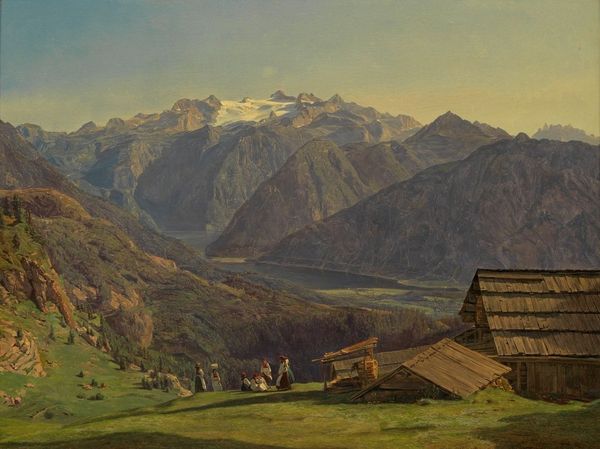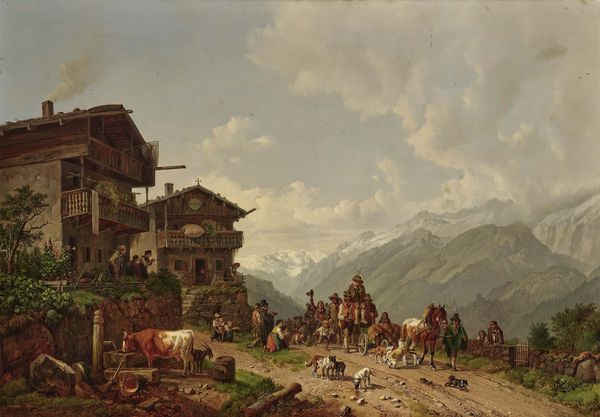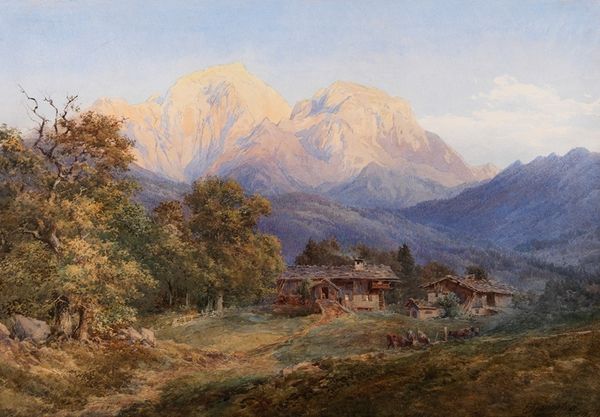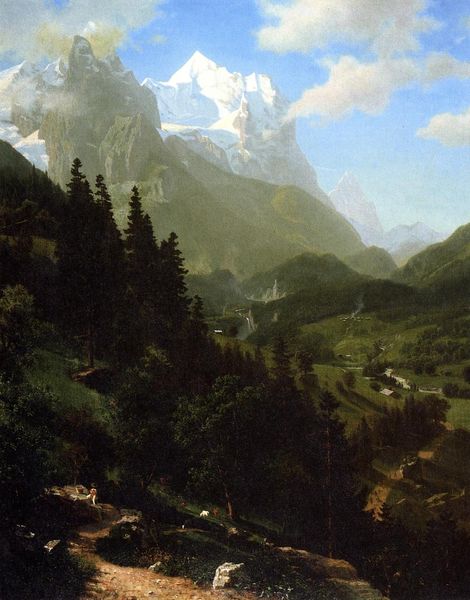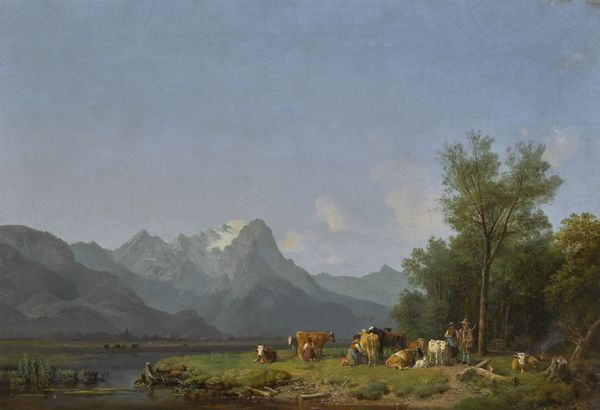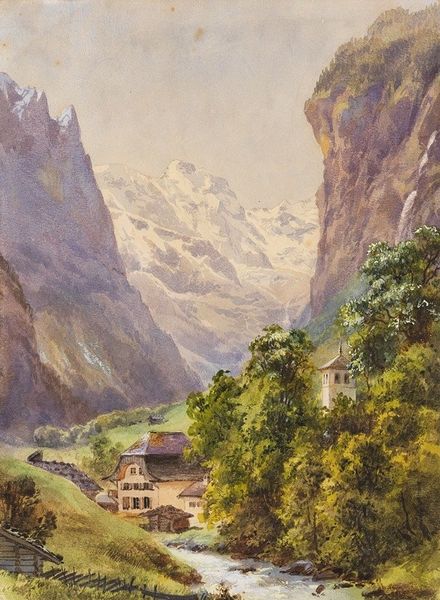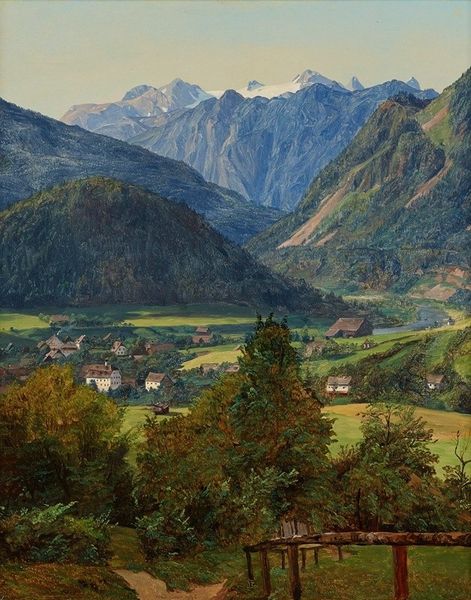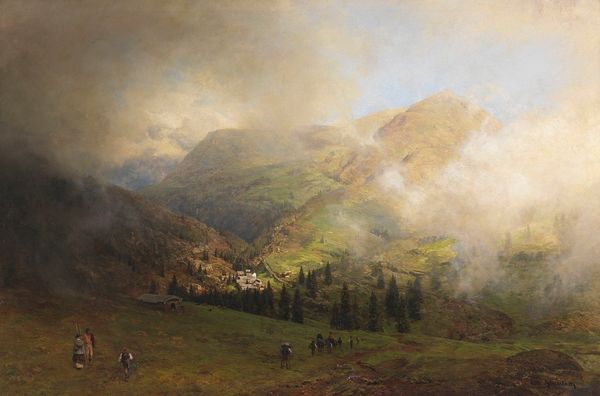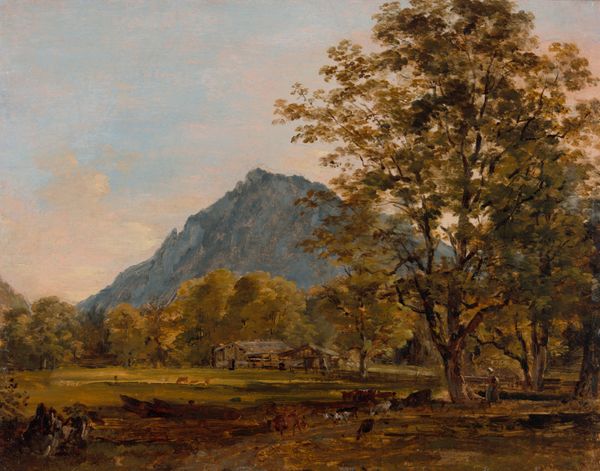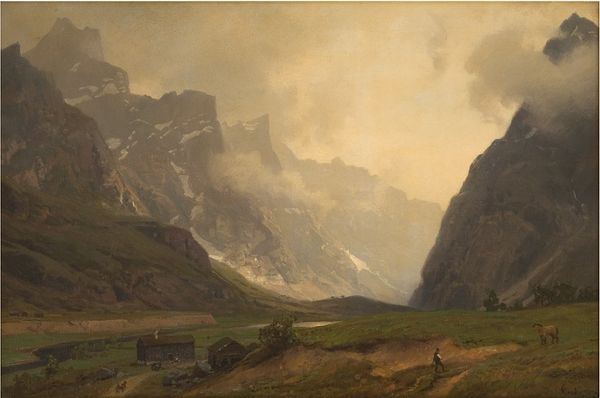
painting, oil-paint
#
painting
#
oil-paint
#
landscape
#
oil painting
#
romanticism
#
academic-art
#
realism
Dimensions: 51 x 44.5 cm
Copyright: Public domain
Editor: This painting is titled "Farm in front of Garmisch. In the background the Wetterstein Mountains" by Heinrich Bürkel. It seems to be done with oil paint. What strikes me is how much detail is put into the textures of both the mountains and the farmhouse. What aspects stand out to you? Curator: What immediately grabs my attention is the relationship between the labor represented and the materiality of the scene. Consider the farmhouse itself. It’s built, presumably, from resources extracted directly from this environment. Note the raw timber, the stone, and the evidence of wear. Editor: You mean how the resources reflect the human presence and work involved? Curator: Exactly. We see the final product – a picturesque farmhouse – but a materialist reading demands that we consider the labor and resource extraction involved in its creation. Who felled those trees? Who quarried the stone? And what were their working conditions? How does the depiction of a seemingly idyllic pastoral scene obscure or reveal these realities of labour and material production? Editor: That's interesting. So instead of just seeing a pretty landscape, we should be thinking about the social and economic forces at play. Curator: Precisely. Think about how the romantic depiction of rural life, so popular in this period, often served to mask the harsh realities of agricultural labor and class divisions. Look at the way Bürkel emphasizes the solidity of the building versus the vulnerability of the field. What could that tension possibly communicate? Editor: I hadn’t considered it that way. I’m starting to see beyond just the visual appeal and consider the story behind the resources used and the people who labored there. Curator: That's the key. By analyzing the materials and their context, we unlock a deeper understanding of the art and the world it represents.
Comments
No comments
Be the first to comment and join the conversation on the ultimate creative platform.
